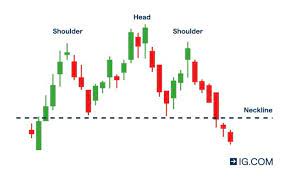A Trading Approach That Continually Defeats All Major Indexes
Trading Approach – 주가지수선물 Are you looking to outshine the market and also maximize your profits however are uncertain exactly how to choose the ideal supplies? Has spending come to be a job? Do you find yourself purchasing warm stocks after they have made their big step? Would certainly you like to find out how I boosted my profile by over 400% in under 7 years? Do you intend to find how I have outperformed the market over the past 3 years by a margin of 5 to 1?
Do You Hate Research study? … I do!
I have actually always intended to find a financial investment technique that made sense. A financial investment strategy in which I do not require to recognize the complexities of the market, anticipate market fads or follow particular stocks. How can I obtain the inside information of what is warm prior to the rest of the market understands? I can not. Neither do I require to.
Plus, I do not have that type of time to dedicate to in-depth study. Like you, I have a normal work that I need to devote my time to. I am not a day investor; nor do I intend to invest every one of my leisure time on the computer system researching. Constantly following the stock market and also getting supply quotes is not just how I want to spend my free time.
I Avoid Specific Stocks … they are also undependable!
Everyone wants to purchase reduced as well as sell high. While numerous people do generate income this way (as well as numerous millions loose money), I have actually found an easier and extra reliable way to utilize the market to my benefit. I do not trade in supplies. I do what I can to avoid specific stocks. And I continually beat the market … month after month after month.
If not stocks, what’s the choice?
Like many individuals, I got greatly associated with the stock exchange in the mid to late Nineties. Tech stocks were skyrocketing as well as I, like everybody else, wanted a part of the activity. It seemed an easy method to earn money. Everyone was getting rich. You did not need a special investment approach to defeat the market.
Throughout this time, I fascinated myself in the monetary markets. I intended to find out as long as I could without surrendering my day job. I was looking for the next best technology stock, IPOs and also the periodic pre-IPO offering. But it was not till I found choices trading that I discovered a financial investment technique (The Yager Trading Method) that can operate in any type of kind of market … Bull, Bear or stationary.
That’s right … alternative trading!
And also I am not discussing supply alternatives or writing protected telephone calls. Choices trading … I began offering options on S&P futures, making use of various approaches as well as trading approaches. And also I succeeded. Quite possibly.
In between July 1998 and also January 2000 (a period of 18 months), from my choice trading system, I transformed a preliminary $25,000 investment into $167,615. That’s over 670% rise. And also this was not paper money where you purchase a supply and also it has actually a certain provided value. This was real, taxed revenue. Revenues accumulated on a regular monthly basis.
Market variations and also volatility have decreased substantially ever since … decreasing the costs. Those types of returns are no longer offered, yet the alternative trading method is still very sound. I still regularly defeat the market. Even the years the DJIA, Nasdaq as well as S&P were all down, I published greater than a 22% gain.
Learn the choice trading technique or see how to make money with this approach. I define the approach as well as show real recent professions on YagerInvesting. The details is FREE. No membership required. This is a technique for working capital only.
For the coming before twelve month (May ’06 through April ’07) this is how my strategy, The Yager Trading Method, performed:
DJIA —– 20.3%.
NASDAQ —– 14.7%.
S & P 500 —– 17.3%.
Yager Trading Technique —– 32.2%.

